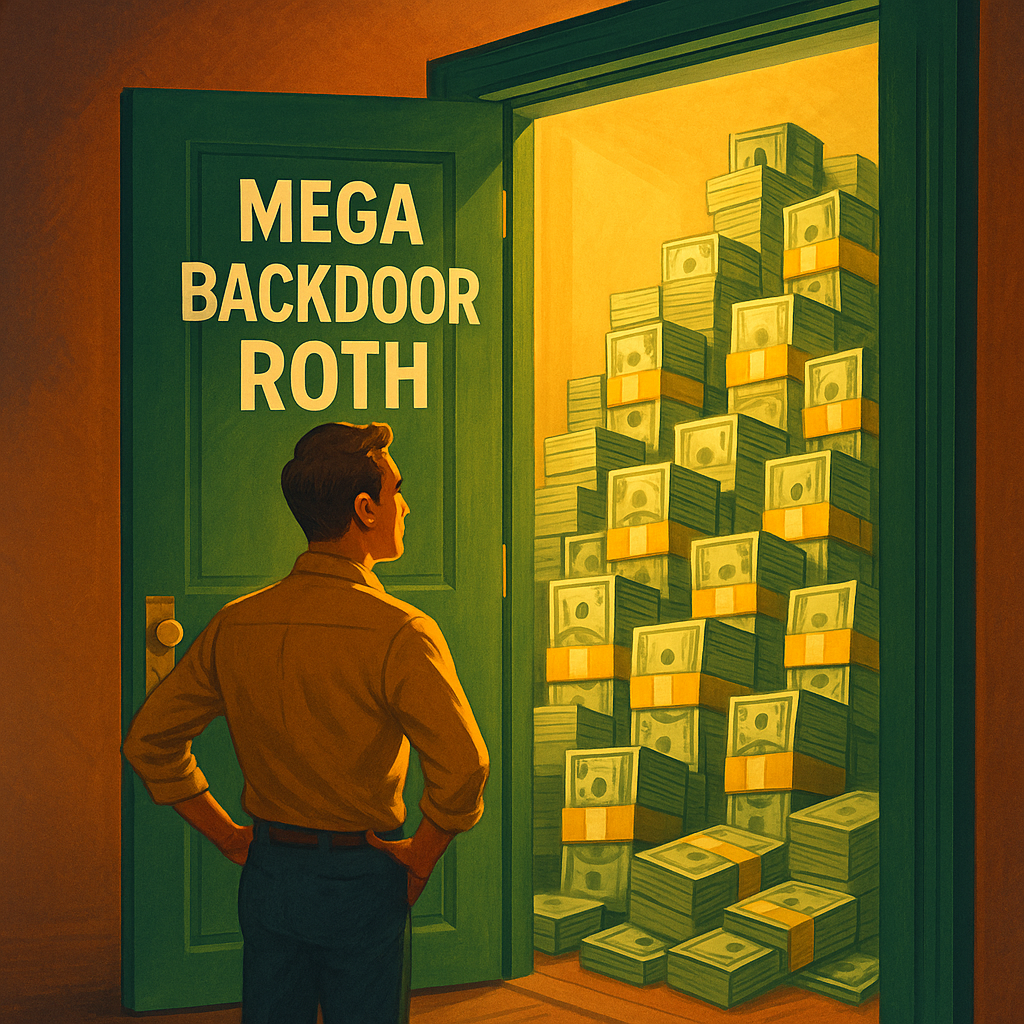
🧲 When I First Heard About It…
I still remember the first time a colleague mentioned the Mega Backdoor Roth.
They said, “You know you can put something like $30,000 more into your Roth every year, right?”
And I thought, “No way. That sounds too good to be true.”
I just assumed I was misunderstanding or missing some loophole only tax attorneys could untangle. So I let it go… for a couple of years.
Then—different job, different team—another colleague brought it up again. This time, instead of brushing it off, I asked him to walk me through exactly what he had done.
I asked: “Wait… you actually did this? And it worked?”
He said yes. No catch. No IRS audit. Just smart planning and a supportive 401(k) plan.
That conversation pushed me to finally do my own research. I scoured articles, read forum threads, and triple-checked the IRS rules.
That was my lightbulb moment.
It was real.
A completely legal, IRS-blessed way to supercharge your Roth savings.
I had missed out on tens of thousands in tax-free growth by waiting.
So now, I’m writing this to make sure you don’t.
🧱 Roth IRA vs. Mega Backdoor Roth
Let’s start with what you may already know:
The Roth IRA is a fantastic vehicle for long-term tax-free growth. I wrote a full post on that here.
But income limits make it off-limits for many high earners. Even if you’re eligible, the annual limit is capped at just $7,000 (or $8,000 if you’re 50+).
That’s where the Mega Backdoor Roth comes in.
| Strategy | Annual Limit (2025) | Income Limits? | Tax Treatment |
|---|---|---|---|
| Roth IRA | $7,000 ($8,000 age 50+) | Yes | Grows tax-free |
| Roth 401(k) | $23,500 ($31,000 if 50+) | No | Grows tax-free |
| Mega Backdoor Roth | Up to $70,000 total | No | Grows tax-free |
🪜 How the Mega Backdoor Roth Works
This isn’t a loophole—it’s more like an Easter egg the IRS left in the tax code for those paying attention.
✅ Step 1: Max Out Your Standard 401(k)
Contribute up to $23,500 in 2025 (or $31,000 if you’re over 50).
✅ Step 2: Make After-Tax Contributions to Your 401(k)
The IRS allows $70,000 in total 401(k) contributions in 2025 (including employer match).
Let’s say your employer contributes $6,500. That means you could potentially add $40,000+ of after-tax dollars.
✅ Step 3: Convert Those Dollars to Roth
- If your 401(k) plan allows in-plan Roth conversions, you can convert the after-tax funds right there.
- If your plan allows in-service distributions, you can roll those funds into a Roth IRA.
The key? Convert quickly to avoid generating taxable gains on those after-tax contributions.
📊 Real-World Example
Let’s say you:
- Max out your 401(k): $23,500
- Get $6,500 in employer contributions
- Have $40,000 in room for after-tax contributions
You convert that $40,000 to a Roth IRA or Roth 401(k) annually.
At 7% annual growth, over 20 years? That pile turns into ~$1.8 million, fully tax-free.
Compare that to just doing a $7,000/year Roth IRA: You’d end up with about $560K.
💡 Why the Mega Backdoor Roth Rocks
- 🚫 No income limits
- 🚀 Massively expands Roth savings beyond traditional limits
- 📈 Tax-free growth and withdrawals
- 🧠 Tax diversification in retirement
- 🪙 No RMDs if funds are rolled into a Roth IRA
⚠️ A Few Caveats
You need a plan that allows:
- ✅ After-tax contributions
- ✅ In-service distributions or in-plan Roth conversions
And you need to act quickly to convert—earnings on after-tax funds are taxable if left in the 401(k).
Not all plans offer these features, so check with HR or your plan provider.
🔁 Start with the Roth IRA
If you’re just getting started with Roth accounts, don’t skip the basics.
My post on Roth IRA benefits lays out why it’s such a powerful first move.
The Mega Backdoor Roth is not where you start—it’s what you unlock once you’ve built a solid foundation and have the means to go further.
🧠 Final Takeaway
I wish I had acted sooner when I first heard about the Mega Backdoor Roth.
But I’m glad I eventually took the time to learn, understand, and take advantage of it.
If you’re a high earner with extra savings and a flexible 401(k) plan, this might be the most powerful tax-free growth opportunity available to you.
Your future self will thank you.
⚠️ Disclaimer
The content on this blog is for informational and educational purposes only and should not be considered financial, tax, or investment advice. While I strive to provide accurate and up-to-date information, I am not a licensed financial advisor or tax professional. Please consult with a qualified professional before making any financial decisions.


https://shorturl.fm/Wx6Pj
https://shorturl.fm/rd37f
https://shorturl.fm/NdQI3
https://shorturl.fm/OCuF1
https://shorturl.fm/igEPR